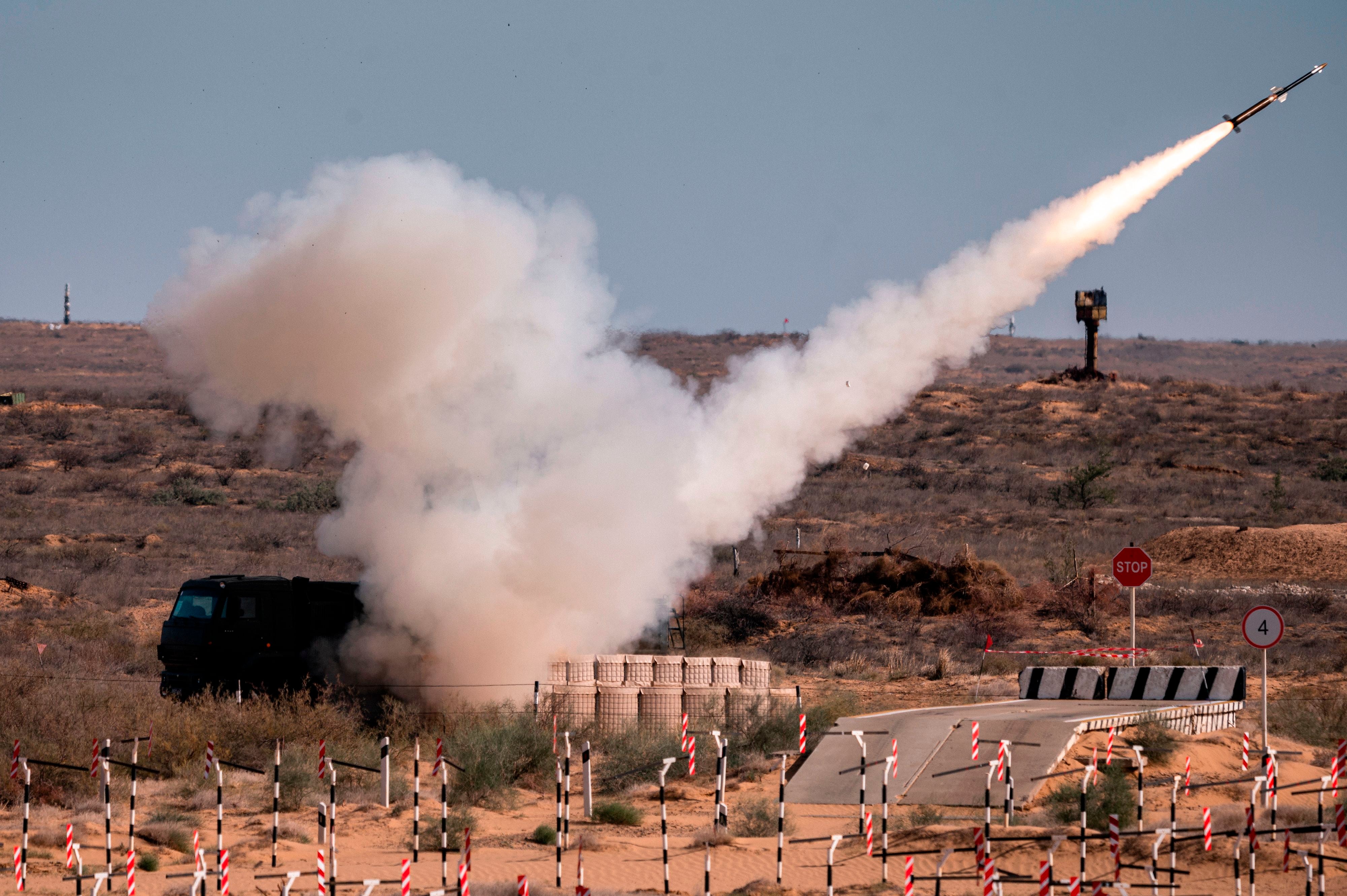In January 2001, a Predator launched an inert Hellfire missile at a dummy tank, marking the first successful missile test from a drone. Twenty years on, drones have become a feature of warfare to an extent that few at the time likely could have imagined. Over 100 militaries have some level of armed or unarmed drone capability, and a growing number have experience using these systems in combat. The notion of what an armed drone looks like and how it should perform has also shifted as the families of drones and drone munitions have become lighter and more diverse. This is fueling a wider adoption of these systems, potentially complicating the United States’ ability to develop effective countermeasures.
The emergence of new drone manufacturers is driving a competitive and dynamic global market for military drones, particularly for medium and large uncrewed aircraft. In addition to those from China, Israel, Turkey and the U.S., new offerings of large drones from companies in Russia, Italy and South Africa as well as many other local research and development projects could offer customers a growing number of options.
Where some countries may have once gone with a single supplier, military drone inventories are increasingly diverse. Morocco, having recently introduced the Israeli Heron 1, is now interested in the U.S. MQ-9 Reaper, according to a report in Reuters. Efforts to loosen U.S. export policy as it relates to large drones could grow the number of countries operating American-made systems, though they are unlikely to substantially alter these trends.
Both the declining cost of components for drones and state policies aimed at boosting domestic manufacturers have created opportunities for some countries to acquire drones independently of foreign suppliers. Spain’s RAPAZ program, for example, seeks to encourage local industry by acquiring small drones for evaluation by the Spanish military exclusively from domestic producers. Likewise, most of Ukraine’s fleet of small drones is provided by domestic manufacturers like Athlon Avia that responded to a need — sometimes in creative ways — for drones following Russia’s invasion of Crimea and the Donbas region. Partnerships between countries like Ukraine and Turkey, Spain and Colombia, and South Africa and the United Arab Emirates have led to joint projects to develop uncrewed aircraft as well as subsystems and munitions for drones. These collaborations offer manufacturers ways to build local capacity, gain access to new markets and technology, and overcome export restrictions.
Drones are increasingly equipped with an array of bombs, missiles and other munitions. While air-to-ground anti-tank missiles like the U.S. Hellfire or the Chinese Blue Arrow-7 remain common, they have been joined by guided bombs of various sizes, air-to-air missiles and rockets. As a result, some drones could assume responsibility for missions such as defensive counterair or suppression of enemy air defenses that have typically been carried out by crewed combat aircraft.
An emerging class of lightweight, reusable armed drones like China’s Blowfish A3 and Turkey’s Songar can be equipped with swappable payloads of mortars, grenades and light machine guns. The proliferation of strike-capable drones is driving the development and sale of drone-specific guided munitions. Turkey’s Roketsan has said that interest from international customers in its MAM (smart micro-munition) series of lightweight munitions for drones has grown in parallel with the interest in Turkish UAVs.
RELATED

Drones have featured prominently in recent armed conflicts in North Africa, the Sahel, the Arabian Peninsula and the Caucuses. In Libya, Turkey and the UAE have supplied armed drones to proxies on opposing sides, while the Iranian-backed Houthi group in Yemen has used drones to attack Saudi energy and transportation infrastructure.
Speaking in a magazine interview in late April of the role that drones and loitering munitions played in the 2020 Nagorno-Karabakh War, German Defence Minister Annegret Kramp-Karrenbauer remarked that drones are likely to remain a feature of armed conflict, given that they are comparatively cheap and easy to obtain, calling drones one of the “weapon systems of the future.”
In addition to deliveries of the systems themselves, many of these deployments have been facilitated by the provision of nonmaterial support in the form of training, maintenance and tactical leadership.
The U.S. Defense Department’s new counter-drone strategy rightly focuses on the threats posed by low-cost small- and mid-sized drones, given the growing popularity of these systems among state and nonstate actors, and the difficulty of detecting and mitigating them with the existing suite of air defense solutions.
In a virtual event in late April, U.S. Central Command chief Gen. Kenneth McKenzie called the proliferation of low-cost drones one of the foremost security issues in the Middle East. Future iterations of the counter-UAS strategy should encompass the full spectrum of drone threats, particularly as the Department of Defense moves to address the challenges posed by peer and near-peer competitors. Rapid technological changes in the form of new, long-range munitions and air-launched loitering munitions, as well as evolutions in adversarial concepts of operations such as manned-unmanned teaming, are poised to offer a new front in the struggle to defend against drones, one for which the U.S. and its allies and partners will need to prepare.
Dan Gettinger is a researcher and consultant. He is a founder and former co-director of the Center for the Study of the Drone at Bard College. He is the author of “The Drone Databook” and of the forthcoming book “Unmanned Combat Aerial Vehicles: Current Types, Ordnance and Operations.”








